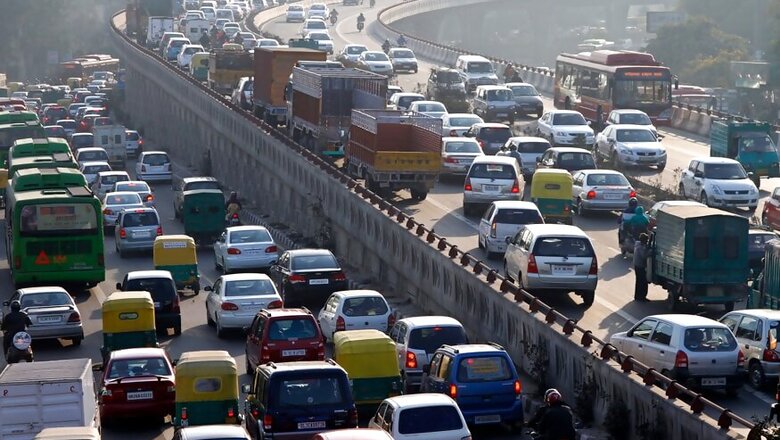
views
A city-based research and advocacy organisation has warned against the growing dependence on personal vehicles for commute, saying it can lead to "irreversible damages" while pointing out that greenhouse gas emissions from transport has recorded the steepest increase in recent years. The Centre for Science and Environment (CSE) said its assessment points out that initially, it took 60 years (1951-2008) for India to cross the mark of 105 million registered vehicles "but thereafter, the same number was added in a mere six years (2009-15)."
"The share of public transport -- at the same time -- is expected to decrease from 75.5 per cent in 2000-01, to 44.7 per cent in 2030-31, while the share of personal transport will be over 50 per cent," the CSE said. Opening the CSE International Conclave Towards Clean and Low Carbon Mobility, CSE Director General Sunita Narain noted that motorisation is assuming explosive proportions in India and locking in enormous carbon and pollution.
"Growing dependence on personal vehicles for urban commute can lead to irreversible trends and damages. Greenhouse gas emissions from transport -- though the third highest currently among all sectors -- has recorded the steepest increase. This is also responsible for health-damaging toxic exposure," she said.
The only way cities can reverse this trend is by ensuring massive scaling up and modernisation of integrated public transport systems to provide attractive, comfortable and reliable options supported by walking and cycling infrastructure, said Anumita Roychowdhury, the Executive Director-Research and Advocacy at the CSE.
According to her, the CSE has initiated an assessment to understand how one defines and accounts for affordability in public transport while investing in modernising and deploying the systems. Addressing the conclave, Principal Secretary and Transport Commissioner of Delhi Varsha Joshi said mobility has not been at the centre of planning in Delhi and many of the capital's high-density neighbourhoods are unplanned colonies, which have little public transport connectivity.
"The Delhi government is augmenting transport infrastructure through land pooling in some areas. It is also considering using para-transit for last mile connectivity. While the government is planning to acquire 3,000 buses, there is a need to improve bus shelters and ancillary infrastructure," Joshi said.


















Comments
0 comment